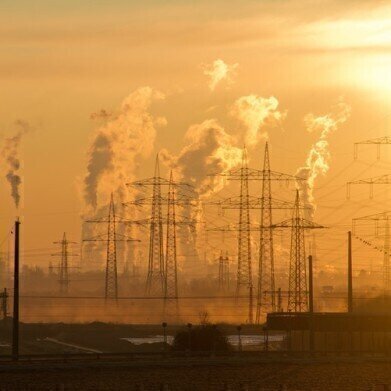HPLC, UHPLC
Chromatography Examines Contamination Around China's Power Plants
Feb 26 2019
The ability to generate power from fossil fuels is one of the main driving forces behind industrialisation and economic growth. Industry needs power to operate and produce goods and services that can generate economic growth bringing wealth to a country. It was one of the drivers behind the Industrial Revolution in the UK - and a similar effect is seen all over the world.
One of the main sources of power that is initially utilised is coal. The coal fields of Britain and Europe played a massive role in driving the Industrial Revolution of the late eighteenth and early nineteenth centuries. But using coal to produce power has a downside - environmental pollution. Anthropogenic driven climate change is the topic that gets all the news headlines. But ground contamination due to coal burning power stations still an issue in many areas of the world.
PAH - contamination around the plant
A recent paper published in the Polish Journal of Environmental Studies - Polycyclic Aromatic Hydrocarbons in Soil Around Coal-Fired Power Plants in Shandong, China - highlights the problem in one of the fastest growing world economies. The UK is described as a world leader in land remediation - a position borne out of necessity as we are a small island and had plenty of contaminated land that we had to clean up.
One of the main pollutants as a result of burning coal are polycyclic aromatic hydrocarbons or PAHs. They are a group of organic compounds that have two or more aromatic rings. Usually nature does a pretty good job of eliminating them from the environment by photodegradation and biological degradation. But when we started burning coal in significant quantities we upset the natural balance and produced far too many PAHs for nature to handle.
Nasty PAHs in the soil
One of the first steps in land remediation is finding out what is in the soil. In the study referenced above, the team focussed on PAHs - as these compounds are considered carcinogenic, teratogenic and mutagenic. They sampled soil from around two coal fired power plants at a depth of up to 20cm. Most of the samples were taken close to the plants, but they also sampled soil up to 1 km away from a plant.
The team then used liquid chromatography to analyse the soil samples. The use of chromatography to analyse samples is discussed in the article, HPLC Analysis of Melamine and Related Substances in Fertilisers. The team report that the soil samples analysed were heavily contaminated with PAHs - with a gradual falling off in concentration as distance from the plant increased. They report that the main sources of contamination ‘were coal combustion, traffic, diesel emission, and mixed sources; coal combustion was the main source.’
Digital Edition
Chromatography Today - Buyers' Guide 2022
October 2023
In This Edition Modern & Practical Applications - Accelerating ADC Development with Mass Spectrometry - Implementing High-Resolution Ion Mobility into Peptide Mapping Workflows Chromatogr...
View all digital editions
Events
Apr 23 2024 Kintex, South Korea
Apr 23 2024 Seoul, South Korea
Apr 28 2024 Montreal, Quebec, Canada
May 05 2024 Seville, Spain
May 15 2024 Birmingham, UK














